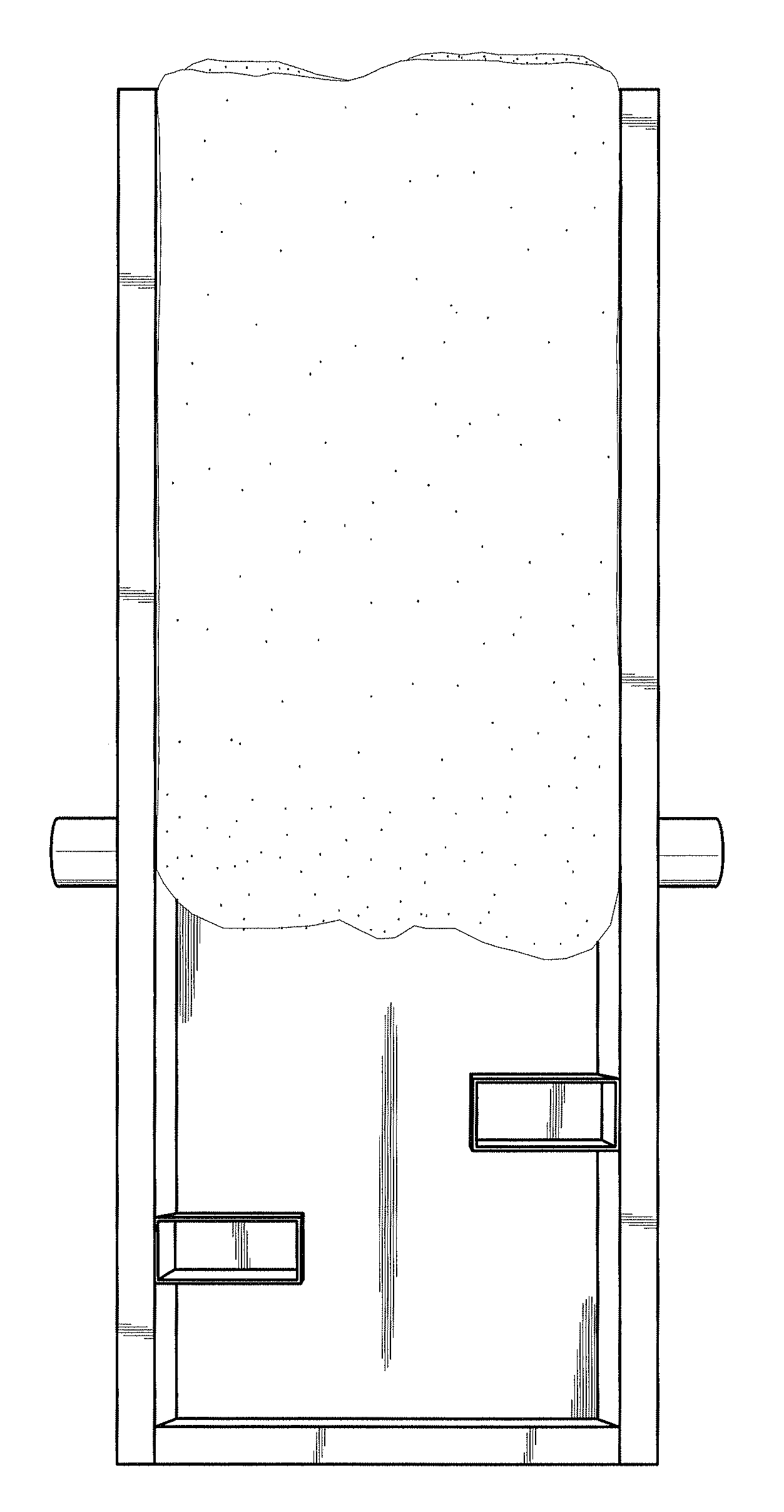Method for filling wall cavities with expanding foam insulation
a technology of expanding foam and wall cavities, which is applied in the direction of liquid surface applicators, coatings, etc., can solve the problems of large number of homes built in the past without sufficient insulation in their walls, high building energy costs, and expensive removal and replacement of walls of homes
- Summary
- Abstract
- Description
- Claims
- Application Information
AI Technical Summary
Benefits of technology
Problems solved by technology
Method used
Image
Examples
example # 10
EXAMPLE #10
[0083]The following compositions were added in yet another combination to test experimental wall fills to determine the value of adding the foam.
WeightCommentsPercentPolyolThe 43% bromine assists in flame retardation whereas the phthalate aromatic ring adds thermal stability. The difunctional hydroxyl group reacts in the resin matrix by increasing thermal and dimensional stability. A synergistic effect was observed when coupled with tris(2-chloropropyl) phosphate. 2-15%The sucrose polyether polyol with a functionality of 5 ensures dimensional stability in a flexible foam / high water content formulation. No glycerine is present. The polyol has a hydroxyl number of between 450-490 with 33,000 cPs, 600 M.W.2.2-8.5%PlasticizerPolyoxyethylene nonylphenyl ether, branched, phosphateThe composition is a 4.5-10.5%hydrotope for solubilizinghydrophobic compoundsin aqeuous solutions. It iscompatible with a highconcentration of non-ionicsurfactants and has asynergistic effect incombin...
PUM
| Property | Measurement | Unit |
|---|---|---|
| boiling point | aaaaa | aaaaa |
| time | aaaaa | aaaaa |
| tack time | aaaaa | aaaaa |
Abstract
Description
Claims
Application Information
 Login to View More
Login to View More - R&D
- Intellectual Property
- Life Sciences
- Materials
- Tech Scout
- Unparalleled Data Quality
- Higher Quality Content
- 60% Fewer Hallucinations
Browse by: Latest US Patents, China's latest patents, Technical Efficacy Thesaurus, Application Domain, Technology Topic, Popular Technical Reports.
© 2025 PatSnap. All rights reserved.Legal|Privacy policy|Modern Slavery Act Transparency Statement|Sitemap|About US| Contact US: help@patsnap.com



